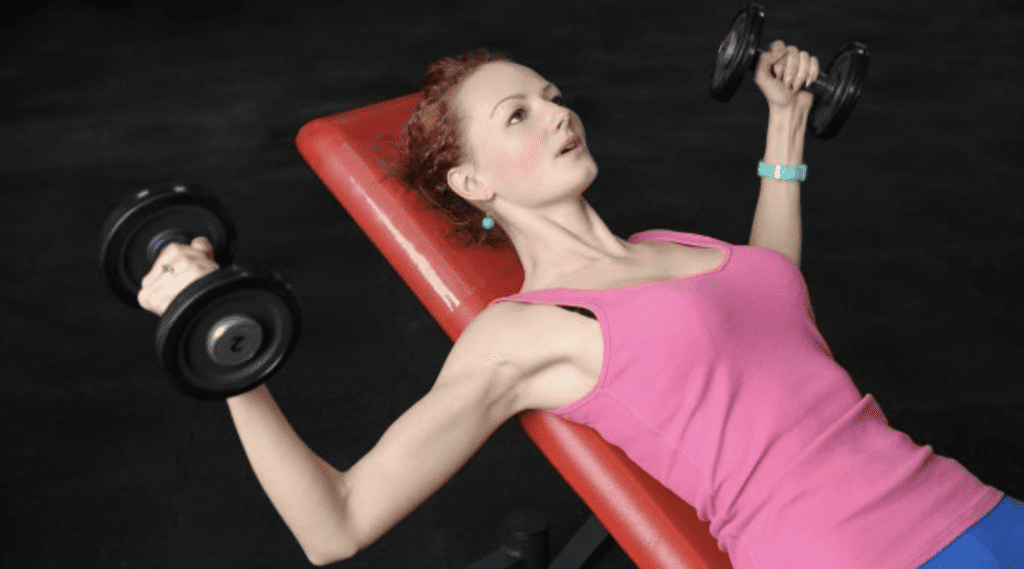Looking to build muscles but not sure where to start? We’ll explore how beginner strength workouts and positive mindsets are key to effective muscle building. Instead of a daunting task, think of a strength workout as a transformative adventure guided by positivity. Positive psychology helps set motivating goals, turns healthy habits into enjoyable routines, and equips you with resilience for setbacks. It’s all about savoring every aspect of your journey, managing stress positively, and enjoying social support. Imagine the beautiful harmony between your mind and body, making your wellness journey a happy and fulfilling adventure!
And speaking of a fulfilling adventure, have you considered incorporating the best lifting straps into your strength training routine? These handy accessories provide additional support, enhancing your grip and allowing you to focus on maximizing your workout. Now, let’s delve into why strength training is crucial for beginners.
Why is strength training important for beginners?
Strength training is essential for beginners due to its diverse benefits beyond muscle building.
- It promotes increased muscle mass, boosting metabolism and aiding fat loss.
- Enhances bone health, improves strength, and contributes to joint function.
- Strength training positively influences hormone balance, reduces the risk of chronic conditions, and supports overall health.
- Suits various fitness levels, providing a foundation for long-term well-being.
- For beginners, strength training is vital for achieving fitness goals and fostering a healthier lifestyle.
To maximize the advantages of strength training, you must understand the different types of strength training exercises that empower individuals to create a balanced and effective workout routine tailored to their fitness goals and preferences. Incorporating a variety of exercises ensures comprehensive muscle development and overall fitness improvement.

Strength Training Exercises
Here are some of the exercises you can do to strengthen your body:
1- Compound Exercises:
Compound exercises are comprehensive movements that engage multiple muscle groups and joints simultaneously. Examples are squats, deadlifts, and bench presses. These exercises are efficient, maximizing muscle engagement and stimulating overall strength development.
2- Isolation Exercises:
Isolation exercises focus on isolating and targeting specific muscle groups. Bicep curls, for instance, exclusively work the biceps, and tricep extensions target the triceps. These exercises are beneficial for sculpting and defining specific muscles, allowing individuals to address particular areas of their physique.
3- Bodyweight Exercises:
Bodyweight exercises rely on the individual’s weight for resistance. Push-ups engage the chest, shoulders, and triceps, while pull-ups work the back and biceps. Squats activate the lower body muscles. These versatile exercises require minimal equipment, making them accessible for various fitness levels and promoting functional strength.
4- Free Weight Exercises:
Free weight exercises involve the use of external weights like dumbbells and barbells. Dumbbell rows target the upper back and lats, while barbell lunges engage the quadriceps and glutes. Free weights provide a full range of motion, activate stabilizing muscles, and offer flexibility in adjusting resistance, contributing to well-rounded strength development.
5- Machine Exercises:
Machine exercises utilize specialized equipment with guided movements. Leg press targets the lower body, specifically the quads, hamstrings, and glutes. Chest fly machines work the chest muscles. Machines are advantageous for beginners as they provide stability and control, helping individuals maintain proper form while building strength.
Understanding the different strength training exercises can help you build your workout routine and eventually start your strength training.
Starting Strength Training
Starting strength training is a fantastic decision for improving overall health, building muscle, and boosting metabolism. Here’s a step-by-step guide to help you get started:
Define Goals:
Clearly define your fitness goals, whether building muscle, increasing strength, or improving overall fitness. Having specific objectives will guide your training plan.
Learn Proper Form:
Place a strong emphasis on learning and mastering the proper form for basic exercises. This is critical for injury prevention and ensuring that you effectively target the intended muscle groups. Begin with bodyweight exercises to establish proper form before progressing to heavier weights.
Compound Exercises:
Prioritize compound workouts that engage multiple muscle groups simultaneously. Examples include squats, deadlifts, bench presses, and overhead presses. Incorporating these movements provides a solid foundation for strength training, working large muscle groups, and promoting overall strength development.
Beginner Routine:
Develop a beginner-friendly routine that encompasses a variety of exercises targeting different muscle groups.
Progressive Overload:
Implement the principles of progressive overload by gradually increasing the weight you lift over time. This strategy is crucial for sustained strength gains. However, start with lighter weights to ensure mastery of proper form before progressing to heavier loads.
Rest and Recovery:
Rest and recovery should be prioritized to allow your muscles to repair and grow stronger. Aim for at least 48 hours of rest between sessions that target the same muscle groups. You could also minimize soreness with a sauna after your workouts. Sufficient recovery is essential for maximizing the benefits of strength training.
Sample Routine: Beginner Strength Workouts
A beginner strength workout typically focuses on compound movements that target major muscle groups. Here’s a simple workout routine for beginners:
Warm-Up:
Begin with 5-10 minutes of light cardio, like jacks and jogging, to increase your heart rate and strengthen your muscles. Follow this with dynamic stretches for each major muscle group.
Workout:
Perform each movement for 3 sets of 8-12 repetitions. Start with a weight that challenges you and allows you to maintain proper form.

#1- Bodyweight Squats:
- Start in a standing position with your feet hip-width apart.
- Extend your arms in front of your body, ideally at chest height, and contract your abdominal muscles.
- Bend your knees, hinging through your hips to move your body into a squat position, ideally bringing your knees to a 90-degree angle.
- Raise back up and repeat the movement.

#2- Push-Ups:
- Move to a plank position with hands slightly wider than shoulder-width apart.
- Bend both elbows to lower your body, keeping your body straight.
- Push back up to the starting position.

#3- Dumbbell Rows:
- Begin standing and maintain a proper alignment with your head, shoulders, hips, and legs.
- Hold a dumbbell in each hand and let the weights hang in front of you.
- Bend your knees and hinge through the hips, then pull the dumbbells, squeezing your shoulder blades together.
- Lower the weights to return to the starting position and repeat the movement.

#4- Dumbbell Chest Press:
- Lie on your back on an inclined bench (or the floor), maintaining a proper alignment.
- Hold a dumbbell in each hand.
- Press the weights up towards the ceiling, then lower them back down to the starting position.
- Repeat the movement as needed.

#5- Bodyweight Lunges:
- Begin standing, maintaining a proper alignment with your head, shoulders, hips, and legs.
- Step one leg forward, lowering your hips with both knees bent, ideally at 90-degree.
- Push off the front foot to return to the starting position and switch legs.
#6- Plank:
- Start in a four-point position on the floor.
- Plant your elbows directly under your shoulders with your hands together.
- Contract your abdominal muscles, then step back with both legs, your toes tucked.
- Aim to create a straight, strong line from your head to your toes as you gaze forward.
Cool Down:
Finish with 5-10 minutes of static stretching for all major muscle groups. This movement helps in improving flexibility and reducing muscle soreness.
Remember to listen to your body, start with lighter weights, and gradually progress as you get stronger. Meanwhile, while exercises are effective for weight loss, it is important to approach it holistically.

Other Common Strategies for Starting Strength Training
Here are 6 common strength training strategies aside from regular exercise to build your muscles safely and effectively:
1. Balanced Diet:
A balanced diet is a healthy approach that provides the necessary nutrients in the right proportions to maintain overall health and well-being. It involves consuming a variety of foods to ensure that your body receives the required nutrients for optimal functioning.
2. Portion Control:
Be attentive to serving sizes to avoid overeating. Use smaller plates, and listen to your body’s hunger and fullness cues to help control calorie intake.
3. Hydration:
Drink an adequate amount of water daily. Sometimes, feelings of hunger can be misunderstood as dehydration, and staying hydrated is essential for overall health.
4. Meal Timing:
Consider the timing of your meals. Some people succeed with strategies like intermittent fasting or eating smaller, more frequent meals. Find a meal timing approach that suits your lifestyle.
5. Mindful Eating:
Practice conscious eating by being present and fully engaged during meals. Avoid distractions like screens, and pay attention to the flavors and textures of your food. This can help prevent overeating.
6. Adequate Sleep:
Ensure you get enough quality sleep. Insufficient sleep can disrupt hormones connected to hunger and stress, potentially leading to weight gain. Aim for 7-9 hours of sleep per night for optimal health.
These strategies help maintain body strength and overall well-being when done mindfully. This entails understanding the integral connection between physical well-being and mental health.

Mindset for Healthy Living
Cultivating a mindset for healthy living involves fostering positive attitudes and habits that support a balanced and sustainable lifestyle. Here are key elements of a mindset for healthy living:
Positive Outlook:
Cultivate an optimistic and confident approach to life. Recognize challenges as opportunities for growth and view setbacks as temporary hurdles rather than insurmountable obstacles. A positive outlook can empower you to navigate the complexities of adopting and maintaining a healthy lifestyle.
Self-Compassion:
Practice self-kindness and understanding. Acknowledge that setbacks and mistakes are natural components of any journey. Treat yourself with the same compassion you would offer to a friend facing similar challenges. Embracing self-compassion creates a supportive foundation for sustained well-being.
Goal Setting:
Set clear, realistic, and achievable goals to guide your path to a healthier lifestyle. Break down bigger goals into smaller, manageable steps. Celebrate each milestone, reinforcing your commitment and motivation for continued progress.
Adaptability:
Embrace flexibility in your approach to healthy living. Life is dynamic, and being adaptable allows you to adjust your habits to changing circumstances without feeling overwhelmed. An adaptable mindset ensures resilience and sustainability in your well-being journey.
Consistency:
Establish consistent routines for exercise, sleep, and meals. Consistency builds habits and contributes to long-term success in maintaining a healthy lifestyle. Regularity in your daily practices fosters a sense of structure and reinforces your commitment to overall well-being.
Enjoyment of Movement:
Discover joy in physical activity by choosing exercises that genuinely please you, whether dancing, hiking, or playing sports. Finding activities you enjoy transforms movement from a chore into a source of happiness. This positive association enhances your motivation for regular exercise.
Yoga for Debloating
Now, let’s explore a holistic approach to wellness by introducing the practice of yoga for debloating. Yoga offers gentle movements and deep breathing that can aid digestion and alleviate bloating. Incorporating yoga into your routine can provide not only physical benefits but also contribute to mental well-being. Poses like Child’s Pose, Wind-Relieving Pose, and Cat-Cow Pose are excellent for promoting digestive health and reducing bloating. Adding yoga to your fitness repertoire complements your strength training, creating a well-rounded approach to your overall wellness journey.
Takeaway
Strength training, when integrated with the principles of positive psychology and a happy mindset, transcends the physicality of exercise. It becomes a transformative journey, blending the power of resilience, motivation, and joy.
Embracing positivity in this pursuit fosters a mindset that views challenges as opportunities, turning workouts into empowering moments of growth. This holistic approach builds physical strength and cultivates mental fortitude, shaping a fulfilling lifestyle where each lift embodies a celebration of progress, each effort reflects determination, and each achievement resonates with the joy of personal empowerment.
Additionally, consider incorporating tools like the best lifting straps to enhance your strength training experience. Remember, your fitness adventure is unique, and the key is to savor every step of the way.
Author Bio
Rick Kaselj is a highly respected health and fitness expert with over two decades of experience. He founded ExercisesforInjuries.com, OliviaDiet.com, Gentlestretching.net, Lifelongwellness.org, HealthNewsDay.com, and RealBodyReset, where he provides valuable resources on fitness, injury prevention, and healthy eating. Rick’s unique approach to fitness emphasizes targeted exercises and proper form, promoting long-term health and injury prevention. His expertise is showcased in his numerous books and training programs, which have helped countless individuals improve their physical health and well-being. Rick’s dedication to helping people achieve their health goals has earned him a reputation as a trusted authority in the industry.
Social:
FB – https://www.facebook.com/oliviadietcomYT- https://www.youtube.com/exercisesforinjuries
Twitter – https://twitter.com/OliviaDiet







I need to start doing more of this. I have some flabby spots that I would like to firm up.
i definitely need to strength train (well, exercise in general) more.. and love that you have so much info and tips here..
This is a well-thought out plan for those of us who want to start a strength training routine. Especially to avoid injuries by over doing it!
This sounds like a really great programme for anyone looking to start strength training. Combining this with healthy living will help you get the best from these workouts.
As a beginner looking to start strength training, the positive mindset approach you advocate is so refreshing. It’s easy to get overwhelmed, but framing it as a transformative adventure makes it much more appealing!
Loving these tips and so perfect for the beginning of the New Year too. I just did a bike and weight workout and love doing it! It hurst so god and I always feel amazing after working out too.
I am sending this over to my husband since we both need to start working on strength training. Thanks!
What an informative post and I definitely learned a lot from this. Thanks for sharing!